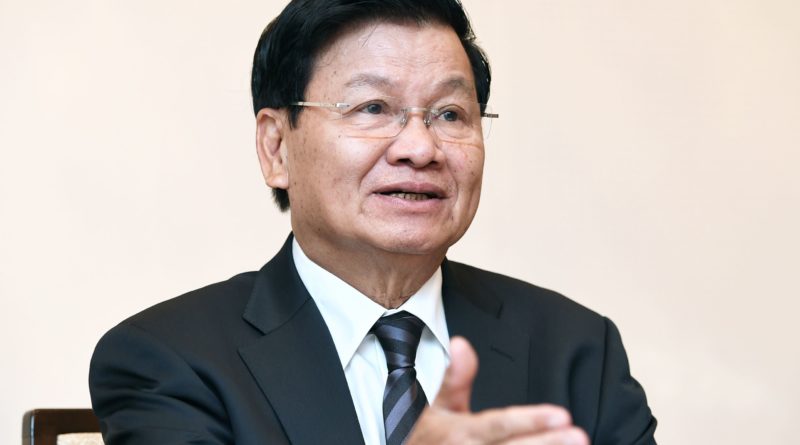Laos Stresses The Need To Borrow As West Raises Debt Alarm
Source: Nikkei
As the only landlocked country in Southeast Asia and one of the least developed ones in the region, Laos seems to have different priorities on growth that are driving it pile on even more debt.
Prime Minister Thongloun Sisoulith believes adding debt beyond a warning level is necessary for the country to grow and compete internationally as an economy, despite growing wariness among Western donor nations and multinational financial institutions.
“As an LDC (least developed country), [Laos] certainly needs funding to support its development,” Thongloun told the Nikkei Asian Review in an interview on the sidelines of the Future of Asia 2018 conference on Tuesday.
According to the International Monetary Fund, Laos’ ratio of public and public guaranteed debt to gross domestic product in 2017 crept beyond 60% and is projected to reach 65.9% in 2019. The IMF’s latest debt sustainability analysis in January 2017 warned that the country’s external debt distress had risen from “moderate” to “high,” as the ratio has continued to climb since breaching the threshold of 40% set by the fund.
J&C Services is the leading Health Insurance provider in Laos !
We offer worldwide Expat Health Insurance, regional Health & Life insurance as well as local insurance solutions for national staff members of companies & organizations in Laos.
And we offer the most competitive premiums !
See more here or contact us at info@jclao.com / 020 77 100 200
The main reason for this rise, which comes even as the economy has grown at an annual pace of around 7% in recent years, lies in investments in hydropower development on the Mekong River and the Chinese-led high-speed railway construction that kicked off in 2016 as part of Beijing’s Belt and Road initiative. IMF Managing Director Christine Lagarde said these projects can “lead to a problematic increase in debt, potentially limiting other spending as debt service rises, and creating balance of payments challenges,” when she was in Beijing in April.
However, Thongloun stressed that Laos “needs to borrow,” even as he raised doubts about figures on debt compiled by multilateral organizations, telling Nikkei: “I think they may have a different approach to calculations.”
On the Chinese-led high-speed rail project that will connect Kunming in southern China to Singapore through Laos, which will cost a reported $5.8 billion, the prime minister told the conference that “I am not concerned much about the burden of debt or the construction.”
As the only landlocked country in Southeast Asia and one of the least developed ones in the region, Laos seems to have different priorities on growth that are driving it pile on even more debt.
Prime Minister Thongloun Sisoulith believes adding debt beyond a warning level is necessary for the country to grow and compete internationally as an economy, despite growing wariness among Western donor nations and multinational financial institutions.
“As an LDC (least developed country), [Laos] certainly needs funding to support its development,” Thongloun told the Nikkei Asian Review in an interview on the sidelines of the Future of Asia 2018 conference on Tuesday.
According to the International Monetary Fund, Laos’ ratio of public and public guaranteed debt to gross domestic product in 2017 crept beyond 60% and is projected to reach 65.9% in 2019. The IMF’s latest debt sustainability analysis in January 2017 warned that the country’s external debt distress had risen from “moderate” to “high,” as the ratio has continued to climb since breaching the threshold of 40% set by the fund.
The main reason for this rise, which comes even as the economy has grown at an annual pace of around 7% in recent years, lies in investments in hydropower development on the Mekong River and the Chinese-led high-speed railway construction that kicked off in 2016 as part of Beijing’s Belt and Road initiative. IMF Managing Director Christine Lagarde said these projects can “lead to a problematic increase in debt, potentially limiting other spending as debt service rises, and creating balance of payments challenges,” when she was in Beijing in April.
However, Thongloun stressed that Laos “needs to borrow,” even as he raised doubts about figures on debt compiled by multilateral organizations, telling Nikkei: “I think they may have a different approach to calculations.”
On the Chinese-led high-speed rail project that will connect Kunming in southern China to Singapore through Laos, which will cost a reported $5.8 billion, the prime minister told the conference that “I am not concerned much about the burden of debt or the construction.”

